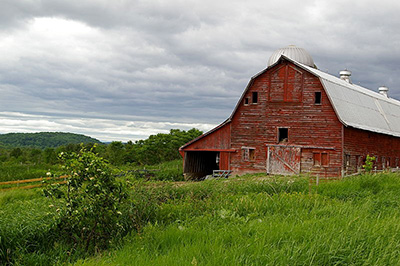
Alchemists in the Middle Ages were fixated on turning lead into gold.
Both are soft, heavy metals. If they could make the dull one into the shiny one, they’d be rich. Right?
Maybe not.
Thousands of years before them, another metal, iron, was eight times more valuable than gold. It could only be found in its pure metal form in iron meteorites. Assyrians and Egyptians made prized iron jewelry, which we find in ancient tombs.
Then some alchemist of their time figured out how to smelt iron from common iron ore, like hematite and magnetite.
When supply boomed, the price plummeted. Iron eventually became the least expensive metal on Earth.
That’s because iron, as found in ores, is our most plentiful element by mass.
Iron makes up most of Earth’s core, which produces Earth’s magnetic field, protecting us from cosmic rays and solar wind.
Iron is the main ingredient in steel, an alloy of iron and carbon. We make a billion tons a year, and use it in everything, especially large buildings—which might be impossible without steel.
Iron is also abundant in the human body; it carries oxygen in the blood and gives blood its signature color…along with many other red things on Earth, from rocks and soil to farmers’ barns, painted with iron oxide pigments.
Iron is common and cheap and incredibly useful, so in some ways, that still makes it a lot more valuable than gold.
Background
Synopsis: Iron (from the Anglo-Saxon iren and Scandinavian iarn) is the most abundant element, by mass, on Earth. It makes Earth’s magnetic field work, enables us to build large structures, and is the reason that farmers’ barns are red.
- Iron, a transition metal with 26 protons, is the tenth most abundant element in the universe. Its chemical symbol is Fe, from the Latin word for the metal, ferrum.
- When you consider the entire planet from core to mantle, iron makes up 34.6 percent of Earth’s mass.
- Earth’s core is 88.8 percent iron, its mantle is 5.8 percent iron, and its crust is 5.6 percent iron.
- Earth’s solid inner core and liquid outer core are composed of iron and nickel. Together, they produce Earth’s magnetic field, which protects the planet from cosmic rays and solar wind, as well as protecting our satellites and electronics.
- Iron and steel are the least expensive metals on Earth and make up 95 percent of the tonnage of all metals produced globally—that’s more than 1.3 billion tons per year!
- Iron does not occur on Earth’s surface as a metal; it must be extracted from iron ores like hematite and magnetite.
- In early history, pure iron was only found on Earth in iron meteorites with up to 90 percent concentration of the metal.
- Beads of meteorite iron dated to 5000 BC have been found in Egyptian tombs.
- Assyrian records show that iron was eight times as valuable as gold before people learned, around 3000 BC, to smelt iron ore to produce metallic iron.
- The Iron Age started about 1300–1200 BC, when iron became more inexpensive than bronze.
- Steel—a mixture, or alloy, produced by the addition of carbon and oxygen to metallic iron—is harder, more flexible, and less brittle than iron.
- Precursors of steel were probably made accidentally by mixing molten iron and charcoal in a smelting fire, producing a stronger alloy.
- The cast iron alloy had more strength than iron but was very brittle; the wrought iron alloy contained less carbon and was malleable but not as strong as cast iron.
- In 1856, Henry Bessemer created the extremely strong, flexible, and durable steel, which has carbon content between that of cast iron and wrought iron. Additional elements may be added to steel to vary its properties.
- The Bessemer process enabled inexpensive mass production of steel and jump-started the industry we know today.
- Steel is essential to our everyday lives. It is everywhere: in our tools, appliances, cars, railroads, planes, roads, bridges, homes, and office buildings.
- Without steel skeletons, large structures like stadiums, bridges, airports, and skyscrapers could not exist.

A barn in Vermont. Credit: Bryan Pocius (original picture); modification: Mielon (https://www.flickr.com/photos/pocius/5792824560) (CC BY 2.0 [https://creativecommons.org/licenses/by/2.0]), via Wikimedia Commons - Iron does not occur on Earth’s surface as a metal; it must be extracted from iron ores like hematite and magnetite.
- Iron is also the reason why barns are traditionally red.
- Centuries ago, European and Scandinavian farmers protected their barns by sealing the wood with linseed oil derived from their crops of flax. They added local red ochres, plentiful in most clay soils around the world.
- Abundant iron-rich red clays were easily accessible for homemade pigments.
- The iron oxides poisoned fungi and mosses known to trap moisture and increase wood decay.
- The darker burnt-orange red color retained more heat in winter.
- The deep reddish colors were similar to brick used in wealthy areas and became fashionable for barns, especially if paired with white farmhouses.
- When European settlers came to America, they brought the custom along.
- Colonial farmers had to make their own paint from local sources. A popular long-lasting recipe called for skimmed milk, lime, and red iron oxide.
- Early commercial paints produced with chemical pigments were priced based on pigment cost. Plentiful iron oxides made reddish paints less expensive than most other colors, ideal for large structures like barns.
- Centuries ago, European and Scandinavian farmers protected their barns by sealing the wood with linseed oil derived from their crops of flax. They added local red ochres, plentiful in most clay soils around the world.

